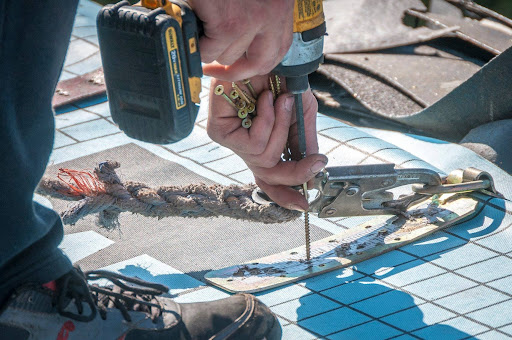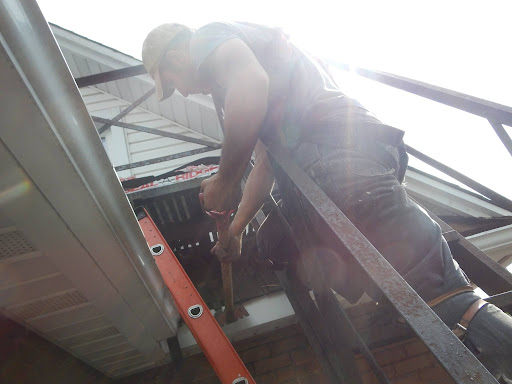Table of Contents:
Exterior siding is a material applied to the outside of a building to protect it from the elements, prevent heat loss, and visually unify the facade. Siding refers to wood units or products that look like wood that is used on houses. Clapboard, horizontal lap siding, vertical board siding, and shingles are just a few examples of siding. Board and batten siding differs from clapboard in that it consists of vertical wood boards with their butt joints covered by battens (narrow strips), giving it a seamed appearance. It is sometimes found in Carpenter Gothic houses and very modest structures. Aluminum and polyvinyl-fluoride-coated siding (commonly referred to as vinyl siding) were created as low-maintenance alternatives to wood clapboard. Fibreboard, a pressed-wood-pulp product, is occasionally used, despite its limited long-term durability. Cladding, which can be made of brick, glass in a metal framework, or panels made of stone, concrete, metal, or other materials, is used to cover the exterior of larger buildings.
What type of siding is the cheapest?
Vinyl siding, which is both cost-effective and versatile, is still the most popular siding choice in the United States and Canada. It’s so popular because it’s the most cost-effective siding option, making it accessible to even the most frugal homeowner. Vinyl siding comes in an almost infinite variety of colours and styles and is extremely low-maintenance and simple to care for. Vinyl siding prices vary, but you should expect to pay between $2 and $5 per square foot to have it installed. Vinyl material should cost $1 per square foot or less.
Your total installation cost will depend upon the thickness and quality of a particular siding product, with thinner options often costing significantly less than thicker, higher-quality panels.
Cheaper panels offer short-term savings because they are more likely to crack, tear loose from your home’s exterior, or sag, resulting in higher replacement and repair costs. For better installation results, look for an Exterior siding installer near you.

Pros
Vinyl siding can imitate a wide range of more expensive options because it is an artificial, fabricated material. As a result, it works well with a wide range of architectural house styles, from modern to ornate Victorian to distinctive Craftsman. It enhances curb appeal; the panels are lovely up close and from a distance since the colour runs through them. There will be no peeling, flaking, chipping, or scratching! Since the colour goes through the material, it won’t fade or dim over time. Over 300 vinyl siding colours meet or exceed industry colour retention performance test criteria.
Vinyl siding provides a wide range of customization options for your home. For your windows, doors, and other surfaces, choose from various trim, styles, textures, shapes, and decorative accessories. You’ll also be able to choose from over 300 long-lasting colours. The siding of this type is durable and long-lasting. It resists denting (though we don’t recommend hitting it with hockey pucks or golf balls. It’s not indestructible; it’s dent-resistant.) Wind, heat, cold, and moisture have virtually no effect on it. There’s no need to worry about warping, splitting, rotting, or insect damage.
To maintain its appearance, vinyl siding does not require scraping or painting. To remove most dust and debris that has accumulated over time, rinse it with your garden hose. If you encounter particularly stubborn soiling, use some mild soap with that water.
So forget about awkward, fear-of-height-inducing ladders and wasting weekends doing maintenance!
Cons
There are several significant drawbacks to vinyl siding. It doesn’t have the same longevity as more expensive materials. It has a proclivity for fading, cracking, and buckling, particularly in areas where the weather is consistently bad. When heated to high temperatures, the material is known to emit pollutants that are harmful to the environment. When put under stress, vinyl will bend or crack, necessitating the replacement of the siding. It conceals moisture issues that can lead to the growth of mould in your home. When installed, less expensive products have an unsightly visible seam. Finally, vinyl is one of the least environmentally friendly materials available; it cannot be recycled and thus pollutes the environment.
Bottom line:
Due to its lower cost than other materials, vinyl siding will continue to be the most “popular” of all home siding options. Vinyl exterior siding lasts a long time. Depending on the quality of the materials and the contractor’s experience that installs it, it can last about 60 years. And with some minimal maintenance on occasion, your vinyl siding can last even longer than that.



